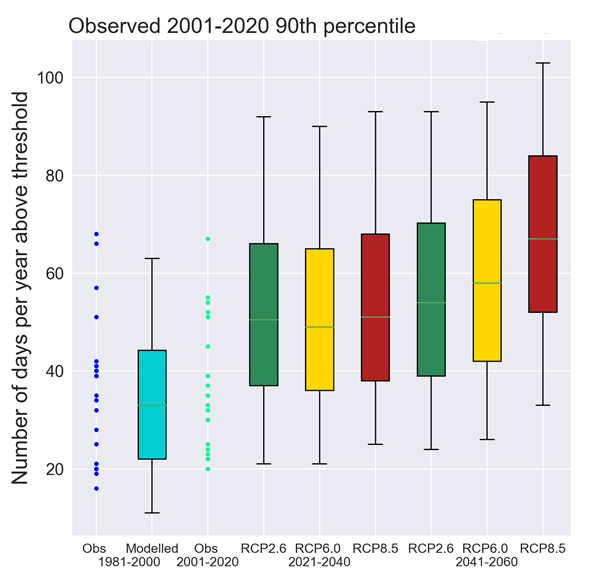Water usage in the UK is known to be very sensitive to weather conditions with demand for water increasing in the summer if the weather is hot and dry. Peak water usage (when usage exceeds the normal baseline) can bring a number of impacts for water supply companies.
Climate change is expected to affect water usage in the future as headline findings from the UK Climate Projections (UKCP) show that on average summers will become hotter and drier, with the frequency and intensity of heatwaves expected to increase.
Ofwat (the regulator for the water sector) requires water companies to use scenario testing and define pathways to develop long-term strategies and objectives that are resilient to plausible future climate scenarios. A range of climate change scenarios were used to help Severn Trent Water understand how to adapt their plans to the different climate pathways and define what needed to be measured at both asset and system level to monitor responses to climate change.
A novel approach
The Industry Consultancy team at the Met Office has recently developed a novel approach to assess how peak usage may change in the future due to climate change, building upon our expertise in the water sector and on climate change science. They have worked closely with one water company, Severn Trent, to answer two questions:
- How does the duration and frequency of peak usage in the current climate change in the future?
- How does peak daily usage change in the future?
Michael Angus, a scientist at the Met Office explained the steps taken to answer these questions. “By calibrating a statistical model which links water usage to weather conditions, historical and future usage scenarios were generated from historical observed weather data and climate projections (specifically UKCP18) for low, medium and high emission scenarios. Peak usage for Severn Trent in the future (for the time periods 2021-2040 and 2041-2060 for low, medium and high emissions scenarios) was compared to peak usage in the historical period”.
This work found that Severn Trent can expect:
- Small changes to the average duration of peak exceedances in the future scenarios.
- An increased frequency of long-lasting peak usage exceedances, particularly in a higher emissions scenario, due to an increase in high daily maximum temperature values during the summer.
- Higher usage on average associated with a critical threshold, driven by higher maximum temperature values on warmer days.
- On average, more days per year where critical usage thresholds are exceeded.

Figure 1: Boxplots showing the spread of number of days per year projected to exceed the historic (2001-2020) 90th percentile of water usage in 2021-2040 and 2041-2060 for low (RCP* 2.6), medium (RCP 6.0) and high (RCP 8.5) emissions scenarios. The number of exceedances per year in 1981-2000 (observed and simulated) and 2001-2020 (observed) are shown for comparison.
*A Representative Concentration Pathway (RCP) is a plausible future emissions scenario.
Useful and actionable information
This collaborative project added rigour and credibility to demand modelling work and helped translate global climate trends to a regional level, bringing to life how the different climate futures could impact customers.
Met Office scientist Isabel Rushby says, “through this work, the Met Office has developed the capability to analyse the impact of climate change on future water usage. There is potential to extend this work using statistical extreme value analysis or by incorporating additional complexity, such as population growth or changing consumer behaviour”.
The Industry Consultancy team uses its detailed understanding of the water sector, combined with weather and climate science expertise to propose novel solutions for organisations to enable them to make decisions. Translation of often complex climate information into useful and actionable information for organisations is crucial to enable them to improve their resilience and improve services for their customers.


